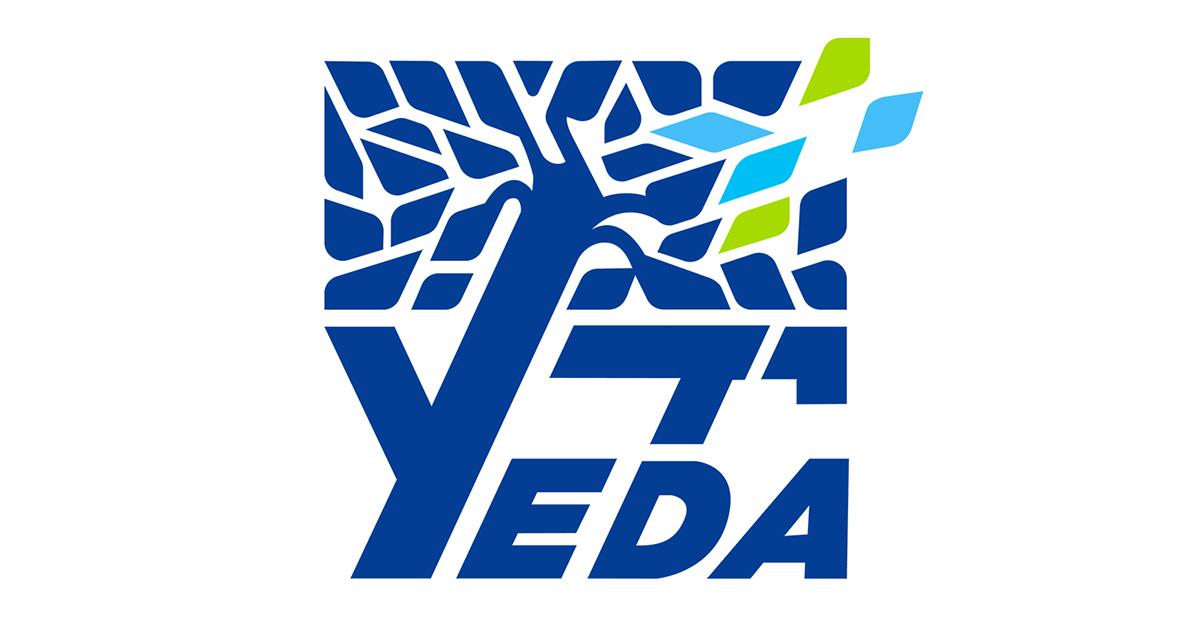YEDA Technology Transfer |
YEDA Technology Transfer from the Weizmann Institute of Science. Yeda Research and Development Company Ltd. is the commercial arm of the Weizmann Institute of Science. Yeda holds an exclusive agreement with the Weizmann Institute to commercialize the unique intellectual property developed by the scientists. The income generated serves to support further basic research and science education. The innovation ecosystem comprises of three separate but interrelated units within the Institute.
This company is:

Verified
AS-22 cell line (high grade serous ovarian carcinoma) | YEDA Technology Transfer
AS-22 cell line (high-grade serous ovarian carcinoma)- M7-2204A cell line originated from a patient diagnosed with high-grade serous ovarian carcinoma (HGSOC). Derived from tumor cells in ascites fluids (metastatic site) originating in a chemonaive 73-year-old caucasian female diagnosed with stage IIIc high-grade serous ovarian carcinoma (HGSOC). Smoking and alcohol consumption - unknown. Cells morphology: Polymorphic trapezoid cells arranged in a cobblestone appearance with a large cytoplasmic surface area.

Verified
Frontotemporal Dementia Diagnosis Using Circulating microRNA Biomarkers | YEDA Technology Transfer
OverviewFrontotemporal dementia (FTD) is a heterogeneous neurodegenerative disorder characterized by frontal and temporal lobe atrophy, typically manifesting with behavioral or language impairment. Because of its heterogeneity and lack of available diagnostic laboratory tests, there can be a substantial delay in diagnosis. Cell-free, circulating, microRNAs (miRNAs) are increasingly investigated as biomarkers for neurodegeneration, but their value in FTD is not yet established. Here, we developed a novel method that enables earlier detection of FTD and accurate identification of patients for clinical trials using circulating, cell-free miRNAs as FTD biomarkers. , Background and Unmet NeedFTD is the second most common form of dementia, after Alzheimer’s disease below the age of 65. Due to heterogeneity in clinical presentation, FTD can be difficult to diagnose1 (on average, accurate diagnosis takes 3.6 years). Previous studies have aimed to develop cell-free biomarkers for FTD, but none of these have shown use for diagnosis. There is an urgent unmet need for biomarkers for FTD in bodily fluids – blood and cerebrospinal fluid (CSF), to facilitate clinical trial design and the enrollment of patients into clinical cohorts with reduced phenotypic variability. Furthermore, circulating biomarkers may provide pharmacodynamics approximation for the efficacy of experimental therapies in trials, thus reducing trial size, length and overall costs. Previous studies have assessed the initial potential of miRNAs, a class of endogenous small non-coding RNAs, as diagnostic FTD biomarkers including miRNA analysis in plasma2, CSF and serum, and CSF exosomes, but no definitive markers have so far been found. , The SolutionProf. Eran Hornstein and his team developed a novel machine learning-enabled method that diagnoses, classifies, and predicts FTD based on plasma-circulating cell-free miRNA biomarkers3. , Technology Essence The team profiled blood plasma miRNA from FTD patients, and using next-generation sequencing technology, discovered a signature composed of 20 miRNAs that could classify FTD. This signature that was found in an initial cohort was informative when applied to a validation cohort. These observations suggest that miRNAs can be potentially utilized in clinical sampling as diagnostic FTD markers, which is needed because of non-specific early symptoms and overlap with other degenerative and non-degenerative conditions. In addition, machine learning algorithms were implemented which resulted in an improved classification precision with a smaller panel of miRNA classifiers. Figure 1: Predictive value of differential miRNA expression in FTD plasma: (A) MA plot of differential miRNA expression in FTD and healthy control; (B) A volcano plot of differentially expressed miRNAs between FTD and healthy control; (C) Receiver Operating Characteristic (ROC) curves demonstrating the prediction capacity superiority of the combinatorial signature of the 20 miRNAs over any individual miRNA. (D) ROC curves in the ML training set: true positive rate (y-axis) vs. false positive rate (x-axis). Mean values and variance when data from 293 samples with 3-fold cross validation. , Applications and Advantages Effective biomarkers for FTD diagnosis in the clinic miRNA pharmacodynamic biomarkers for monitoring drug effects Improves diseases subtyping Can be used to distinguish between ALS and FTD conditions Reduces diagnostic delay Cost-effective tool to facilitate clinical development of FTD drugs , Development Status Prof. Hornstein and his team performed next-generation miRNA sequencing on cell-free plasma from 168 FTD cases and 125 controls. Based on cell-free plasma miRNA profiling by next-generation sequencing and machine learning approaches, they develop nonlinear prediction models that accurately distinguish FTD from non-degeneration controls in ~90% of cases. , ReferencesMagen, Iddo, Nancy-Sarah Yacovzada, Jason D. Warren, Carolin Heller, Imogen Swift, Yoana Bobeva, Andrea Malaspina, Jonathan D. Rohrer, Pietro Fratta, and Eran Hornstein. 2020. miRNA Biomarkers for Diagnosis of ALS and FTD, Developed by a Nonlinear Machine Learning Approach. medRxiv. DOI: 10.1101/2020.01.22.20018408

Verified
High-Performance Electrochromic Devices | YEDA Technology Transfer
OverviewHigh-performance electrochromic materials that exhibit a practical combination of low-voltage operation and efficient color-switching, as well as long-term stability have been developed by the group of Prof. van der Boom. Electrochromic materials that are currently available in the market offer a broad range of colors and a fair electrochromic activity. For the incorporation of such materials into a wide range of real-world applications, there is a need for more intense coloration, shorter switching times and improved stability. , The NeedThe trends towards energy efficiency, comfort and privacy are driving forward the commercial use of smart glass, the largest market segment of electrochromic materials. Smart glass can involve different kinds of technologies: Thermochromic materials are generally more affordable, although not user-controlled. Liquid crystal technology is superior in terms of switching speed and the opacity of the dark state. However, it is expensive and has low controllability as only two states (clear or opaque) can be achieved. Suspended particle technology combines high switching speed and user control but is extremely expensive. Electrochromic technologies give the user the ability to tune the optical transmission from clear to dark but have a low switching speed, lack complete opacity and vary in costs. Electrochromic materials are promising candidates to be incorporated in technologies such as smart glass, displays and smart mirrors. Common types of electrochromic materials are metal oxides and organic polymers. These materials offer a broad range of colors and fair electrochromic activity. However, there is a substantial need for low-cost materials that can combine a large color range, fast switching times, high durability and uniform surface coverage to be used for real-world commercial applications. , The SolutionThe inventions cover the composition, design and synthesis of molecular coatings for electrochromic devices, as well as a fully automated spray-coating process. A diverse color palette is available by simple synthetic means and the coloration intensity is highly adjustable owing to the coating technique, based on a layer-by-layer approach that allows the incorporation of the desired amount of material in the coating. Moreover, our design approach allows the incorporation of multiple complexes into a single coating. With each complex individually accessible at a different voltage, such coatings can display multi-color states. This straightforward design of our coatings offers unprecedented control of their optical properties. Fully reversible optical responses occur with variation of the oxidation state of the coordination complexes, while remaining stable in both transparent and colored states. The low-voltage operation, combined with high stability renders this technology an ideal candidate for multiple electrochromic device applications. Electrochromic devices (ECDs) bearing a surface area of 6 cm × 6 cm. Top: Schematic presentation of the ECDs based on working electrodes. Middle: Photographs of the colored and bleached states of the ECDs C. Bottom: Chronoamperometric stability measurements. , Applications and Advantages Advantages Fully reversible optical responses Very high coloration efficiency Color tuning via molecular design Low response time (up to 400 ms for >95% switching) High switching efficiency (efficient switching at 100 ms) and stability Automatic spray coating process, offering uniform coverage, applicable for large-scale applications Applications Smart windows/smart glass Color displays and electrochromic paper Smart mirrors Electrochromic lenses, goggles and helmet-visors Wearables , Development Status To date, a wide range of materials and devices have been electro-optically tested and confirmed. Different substrates have been coated, including on a large scale. The coating process has been developed and automated. (Published in: https://onlinelibrary.wiley.com/doi/epdf/10.1002/adma.201706641; https://pubs.acs.org/doi/full/10.1021/jacs.7b04217). , Market OpportunityElectrochromic materials and devices have been a hot area of research globally, with two main mature commercial applications: electrochromic smart glass and automotive auto-dimming rearview mirrors. Design trends in industries such as automobile and architecture are projecting greater use of smart glass in the coming future. Within the smart glass market, the electrochromic glass segment is witnessing a noticeable growth, with an expected increase to USD 6.2 billion in 2024 at a CAGR of 16.8%. This rise can be attributed to its increasing applicability in automotive and domestic sectors. For example, Boeing is now incorporating and upgrading electrochromic smart windows for the passenger cabin of the 787 Dreamliner.
View all products
Keywords
Industries
Where is Yeda Research and Development Co. Ltd located?
The company Yeda Research and Development Co. Ltd is located in Rishon LeZion, Center District, Israel. It's worth noting that the company may has more corporate locations
How many employees does Yeda Research and Development Co. Ltd approximately have?
As of the latest available information Yeda Research and Development Co. Ltd has around 11-50 employees worldwide.
When was Yeda Research and Development Co. Ltd founded?
Yeda Research and Development Co. Ltd was founded in 1959
In which industries does Yeda Research and Development Co. Ltd mainly work?
The company Yeda Research and Development Co. Ltd has it's main focus in the industries of Agriculture and Farming, Biotechnology, Science and Engineering, Energy, Sustainability, Health Care, Financial Services, Lending and Investments

Yeda LLC
United States
1-10 Employees
2011
Yedaiah International Logistics Group
Turkey
11-50 Employees
2018
BIRAD – Research & Development Company Ltd.
Israel
51-100 Employees
Yissum - יישום אנשים ותוצאות
United States
1-10 Employees
1987
Yair Technologies LTD
Israel
11-50 Employees
MEYTAR (DITAL) ENGINEERING LTD
Israel
1-10 Employees
2005
YDLabs
Israel
1-10 Employees
2022

ELDAN ELECTRONIC INSTRUMENTS LTD
Israel
51-100 Employees
1965
Topics which have been searched by others and may be interesting for you: